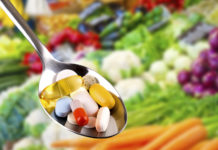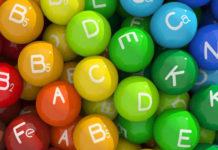Once approved by the FDA, food additives are considered fit for human consumption – but they may not be entirely safe. Some food and color additives have induced allergic reactions, while others have been linked to cancer, asthma, and birth defects. The FDA requires that all ingredients be listed on a food’s label, but additives are often listed without specificity, as “spices” or “flavorings,” making it impossible for consumers to determine what, exactly, they are eating.

On the other hand, there are numerous additives that must be listed explicitly on packaging because they can cause health problems. These include sulphites, for example, which are used to prevent discoloration (very common in dried fruit). The FDA estimates that sulphites cause allergic reactions in one percent of the general population, and five percent of people who suffer from asthma. Sulphite allergies can develop at any point in a person’s life, and can result in acute, potentially fatal respiratory distress. As a result, the FDA now restricts sulphite use to certain types of foods and requires that they be included on product labels.
A 2006 study found that people who regularly eat cured meats have a 71 percent greater chance of contracting lung disease than those who never eat cured meats.
Similarly, monosodium glutamate (MSG), which can cause headaches, nausea, weakness, difficulty breathing, drowsiness, rapid heartbeat, and chest pain, must be identified on food labels because of its potential for harm. Recent research also points to health risks from eating nitrites, common preservatives used in cured meats such as sausages, bacon, and hot dogs.

There are also many cases in which approved additives once thought to be safe were later restricted or banned after being proven harmful to human health. The artificial sweetener cyclamate, widely used in the 1950s and 1960s, was banned by the FDA in 1970 after research suggested that it caused cancer. The color additive Violet No. 1 was used by the USDA to stamp inspection grades on beef until it, too, was suspected of being a carcinogen and banned by the FDA. After years of use, a flavoring called Safrole that was used in root beer, as well as the common preservative BHA, were both found to cause cancer.
Fruit juices, or more commonly fruit “drinks”, marketed heavily to parents of young children, nearly always contain additives, including preservatives, artificial sweeteners, and colors. A study published in The Lancet in November of 2008 looked at the effects of fruit juice additives on children’s behavior, finding that, “Artificial colors or a sodium benzoate preservative (or both) in the diet result in increased hyperactivity in 3-year-old and 8/9-year-old children in the general population.” In most cases, the increase was nearly 50 percent greater than that observed in children who consumed fruit juice without additives.
© Copyright – Hector Sectzer

















